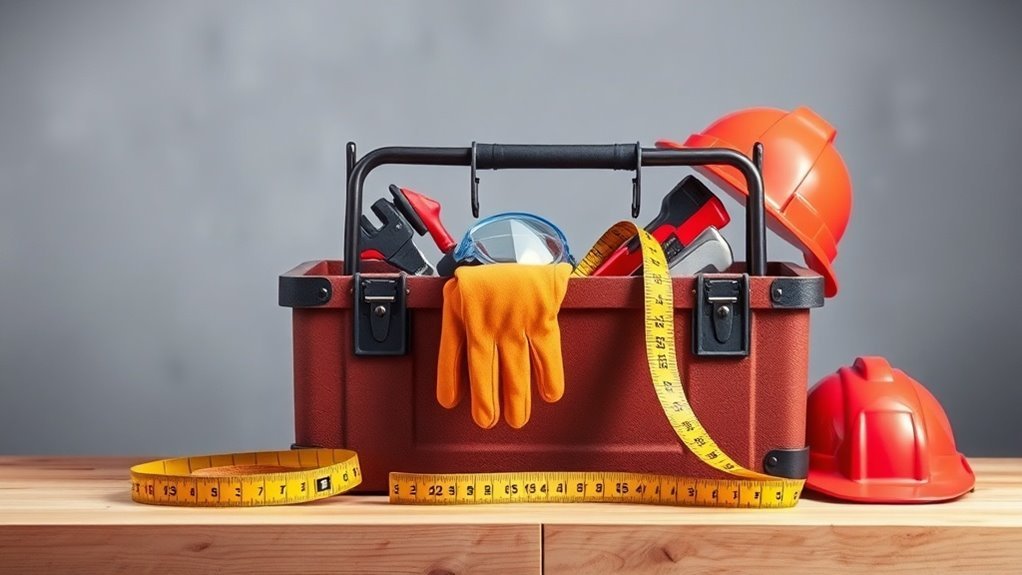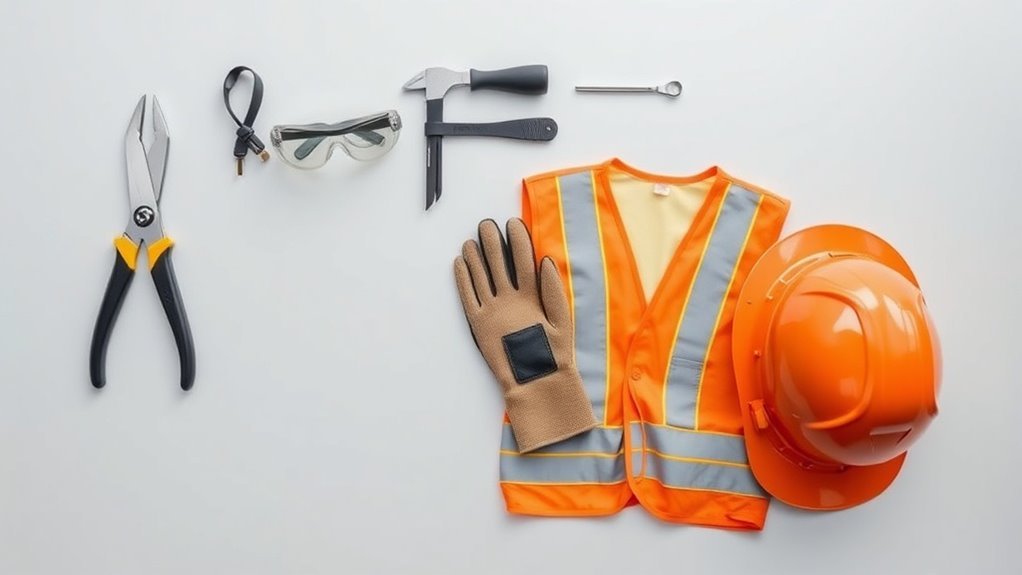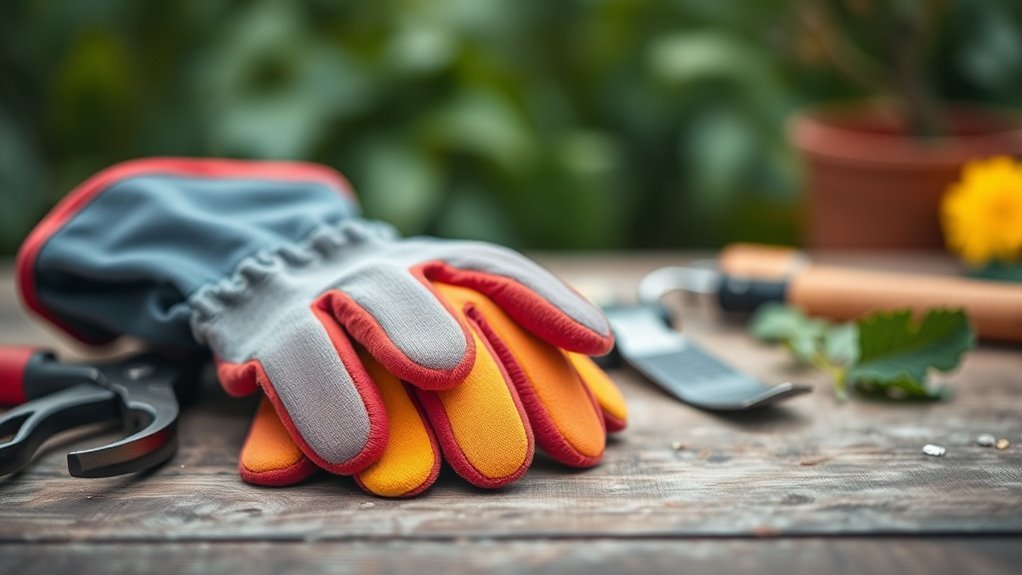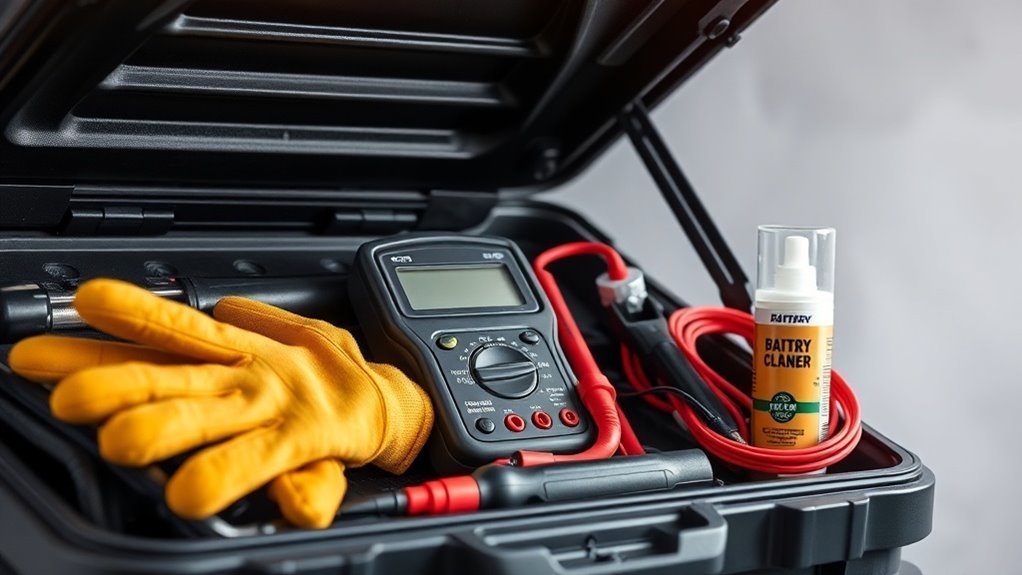Understanding Standards & Certifications for Safety Gear
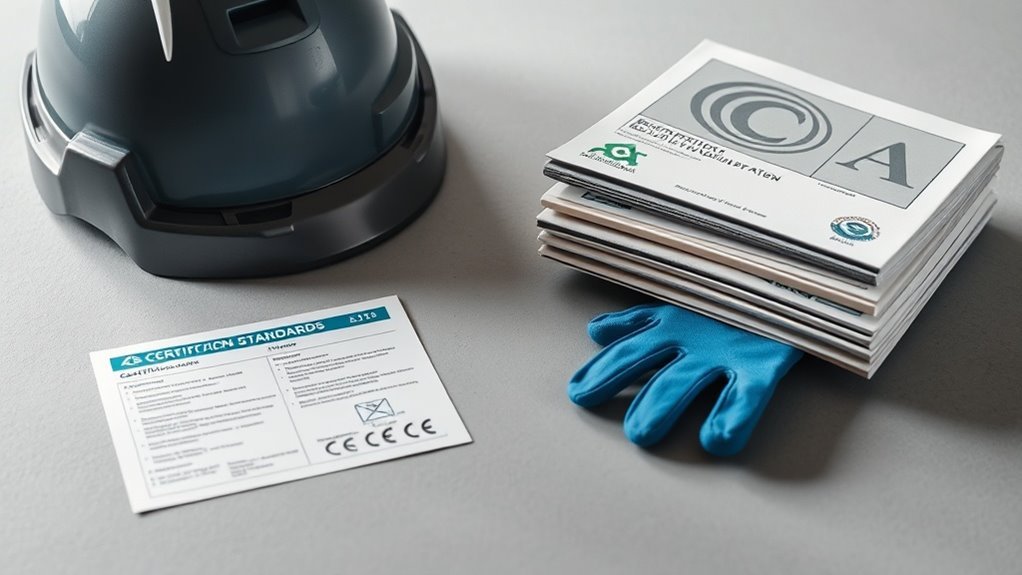
Understanding standards and certifications for safety gear is essential for your protection at work. Compliance guarantees that your equipment, like hard hats or gloves, can effectively shield you from injuries. Key certifications, such as ANSI and ASTM, outline specific safety requirements in items like eye protection and footwear. Always choose gear that meets the relevant standards to minimize risks. If you want to know more about how to select the right certified safety gear, just keep going.
Key Takeaways
- Compliance with safety standards enhances workplace safety and reduces the risk of accidents and injuries through effective personal protective equipment (PPE).
- Key certifications include ANSI/ISEA 105 for hand protection, ASTM F2413 for footwear safety, and NFPA 70E for electrical safety clothing.
- Understanding hard hat types and classes—Type I for falling objects and Type II for side impact—ensures appropriate protection against specific hazards.
- Regular assessments of workplace hazards guide selection of certified safety gear tailored to job responsibilities and environmental changes.
- Comfort and fit are crucial for consistent use of safety gear, and user feedback can highlight gear effectiveness and durability.
The Importance of Safety Standards
When it comes to protecting your health and safety, understanding the importance of safety standards can’t be overstated. Safety standards guarantee that the equipment you use meets specific criteria, minimizing risks associated with hazardous environments. They provide guidelines for manufacturers to follow, guaranteeing that products are reliable and effective.
By adhering to these standards, you’re not only safeguarding yourself but also promoting a culture of safety within your workplace. It’s essential to choose gear that complies with established regulations, as this often translates to better performance and durability.
Investing in quality safety gear, backed by robust standards, is a smart move that can greatly reduce the chances of accidents, injuries, and even fatalities. Additionally, implementing effective respiratory protection is critical to preventing long-term health issues associated with DIY work. Your safety is worth it!
Key Certifications in Personal Protective Equipment (PPE)
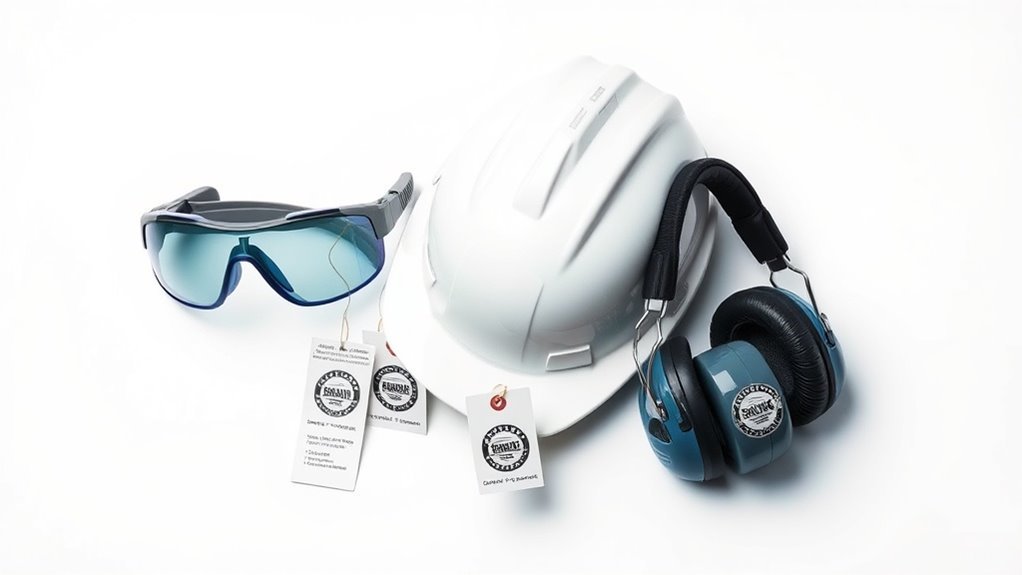
When it comes to personal protective equipment (PPE), understanding key certifications is essential for your safety. Compliance with these certifications guarantees that the gear you choose meets necessary safety standards. Let’s explore some common PPE certifications and their importance in a global context. These certifications often take into account the helmet’s ability to manage energy dispersion, which is crucial for effective impact resistance.
Common PPE Certifications
Steering through the world of personal protective equipment (PPE) can be overwhelming, especially with the variety of certifications available.
Knowing these certifications helps you make informed choices for your safety. Here are four common PPE certifications you should be aware of:
- ANSI/ISEA 105 – For hand protection, focusing on cut, puncture, and abrasion resistance.
- ASTM F2413 – Covers footwear, ensuring you’re protected against electrical hazards and impact.
- NFPA 70E – Certifies arc-rated clothing and PPE for electrical safety.
- CE Marking – Indicates conformity with European health, safety, and environmental protection standards.
These certifications guide you in selecting the right gear, ensuring you stay safe on the job.
Importance of Compliance
While you might think any gear can keep you safe, compliance with key certifications in personal protective equipment (PPE) is essential for ensuring effective protection. It’s not just about looking the part; it’s about trusting that your gear meets industry standards. Wearing certified PPE can greatly minimize risks in hazardous environments, offering you peace of mind.
Here’s a quick look at some key certifications you should look for:
| Certification | Description |
|---|---|
| ANSI | American National Standards Institute |
| ISO | International Organization for Standardization |
| CSA | Canadian Standards Association |
| NFPA | National Fire Protection Association |
| ASTM | American Society for Testing and Materials |
International Standards Overview
Understanding the various international standards for personal protective equipment (PPE) is crucial for selecting the right gear.
These standards guarantee that the equipment meets safety, performance, and quality guidelines.
Here are some key certifications you should know:
- ISO 9001: Focuses on quality management systems essential for manufacturing.
- EN 471: Relates to high-visibility clothing, ensuring you’re seen in hazardous environments.
- ANSI Z87.1: Addresses eye and face protection standards in the U.S.
- NFPA 70E: Focuses on electrical safety in the workplace, providing guidelines for protective apparel.
Understanding Hard Hat Standards

When it comes to hard hats, understanding the different types and their roles in safety is vital.
You’ll also want to get familiar with ANSI and OSHA regulations, as they set the standards for the head protection you wear on the job.
Knowing these aspects helps guarantee your safety and compliance in hazardous environments.
Types of Hard Hats
Hard hats are vital in protecting workers from head injuries on job sites. Understanding the different types of hard hats can help you choose the right one for your work environment. Here’s a quick overview of the main types:
- Type I Hard Hats: Offers top protection against falling objects; ideal for construction sites.
- Type II Hard Hats: Provides protection from both top and side impacts; used in areas with potential lateral hazards.
- Class G (General): These hard hats are non-electrical and designed for low-voltage electrical work.
- Class E (Electrical): Tested for high-voltage electrical exposure; suited for electrical maintenance tasks.
Choosing the correct hard hat is essential for your safety and compliance with workplace regulations. Always confirm they meet the appropriate standards.
ANSI/OSHA Regulations Explained
Selecting the right hard hat means knowing the regulations that govern them. The American National Standards Institute (ANSI) sets the guidelines for hard hat performance, ensuring they can withstand impact and penetration.
Look for hard hats labeled with ANSI Z89.1, which classifies them based on the level of protection they offer. There are two primary types: Class G (General) and Class E (Electrical), each designed for specific hazards.
On the other hand, the Occupational Safety and Health Administration (OSHA) mandates using head protection in environments where there’s a risk of injury. Understanding these regulations helps you choose a hard hat that meets safety standards, keeping you protected on the job.
Always check for compliance prior to making your purchase!
Safety Footwear Certifications
While you may not think much about them, safety footwear certifications play a crucial role in guaranteeing that your shoes protect against various workplace hazards.
Understanding these certifications can help you choose the right footwear for your job.
Here are four key certifications to look for:
- ASTM F2413: Guarantees shoes meet impact and compression resistance standards.
- EH Rating: Indicates electrical hazard protection against live wires.
- Slip Resistance: Measured by specific testing to prevent slips and falls in wet conditions.
- Puncture Resistance: Protects your feet from sharp objects penetrating the sole.
Additionally, it is essential to consider steel toe caps as they enhance the durability of safety footwear while providing extra protection against heavy objects and other hazards.
Evaluating Gloves and Eye Protection Standards
When it comes to workplace safety, understanding gloves and eye protection standards is essential. These standards guarantee that the gear you use provides adequate protection against potential hazards in your environment.
For gloves, check for certification marks like ANSI/ISEA 105, which indicates cut resistance and chemical protection. You’ll want to match the gloves’ specifications with the specific risks you face daily.
For eye protection, look for certifications like ANSI Z87.1, which assures that eyewear can withstand impact and protect against flying debris.
Always consider the environment and the types of hazards present when evaluating both gloves and eye protection. By understanding these standards, you can make informed choices that enhance your safety on the job. Additionally, selecting gloves made from suitable materials can further improve your protection against various risks encountered in the workplace.
How to Choose Certified Safety Gear
It’s essential to guarantee your gear meets current safety standards. Here are four tips to help you select the best options:
- Check Certifications: Look for gear certified by reputable organizations like ANSI or OSHA.
- Assess the Environment: Identify hazards specific to your workplace to determine the type of protection needed.
- Fit and Comfort: Make sure the gear fits well and is comfortable, as this encourages regular use.
- Read Reviews: Look for feedback from other users to gauge the effectiveness and durability of the gear.
Additionally, consider the integration of smart technology in safety gear that enhances monitoring and communication in hazardous environments.
Questions
What Are the Consequences of Using Non-Certified Safety Gear?
Using non-certified safety gear can lead to serious injuries, legal repercussions, and financial losses. You’re risking your safety and well-being, as uncertified gear might not offer the protection you need in hazardous situations.
How Long Do Safety Certifications Last?
Safety certifications typically last for three to five years, like a flower blooming in spring before it needs renewal. After that, you’ll need to re-evaluate and possibly recertify to guarantee ongoing protection and compliance.
Can Safety Gear Be Reused After It’s Expired?
No, you shouldn’t reuse safety gear after it’s expired. Materials can deteriorate, compromising protection. Always prioritize your safety and invest in new gear when certifications lapse to guarantee you’re adequately protected during your work or activities.
Are There Safety Standards Specific to Different Industries?
Did you know that over 50% of workplace injuries could be prevented with proper safety equipment? Yes, there’re specific safety standards tailored to different industries, ensuring gear meets unique hazards and compliance requirements effectively.
How Can I Verify the Authenticity of Safety Certifications?
To verify safety certifications, check the issuing organization’s website for legitimacy, look for certification numbers, and confirm with industry databases. You can also directly contact manufacturers for additional verification and authenticity assurance.
Conclusion
In the world of safety gear, understanding standards and certifications isn’t just a guideline—it could save lives. Did you know that wearing proper PPE can reduce workplace injuries by up to 40%? When you choose gear that meets regulatory standards, you’re not just protecting yourself; you’re investing in your well-being and future. So, take the time to select certified safety equipment—your safety depends on it, and those who care about you will thank you for it.


